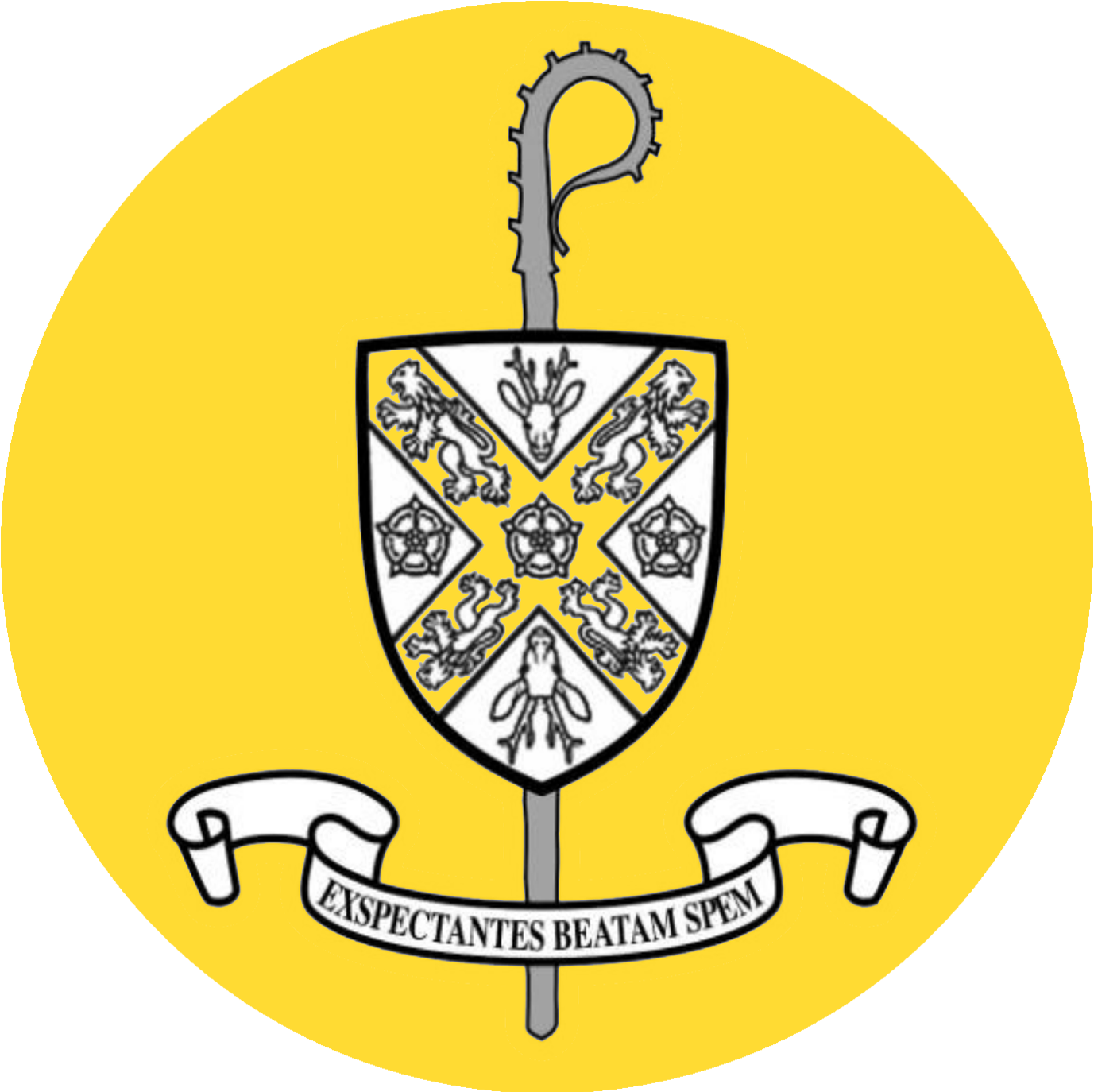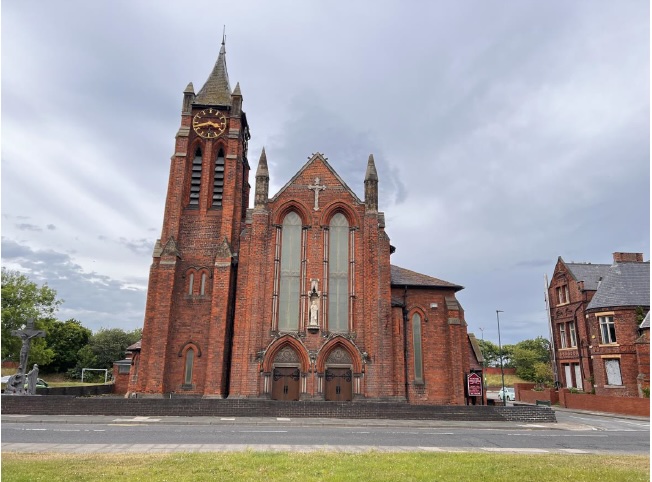The Diocese of Middlesbrough has issued a response after an open meeting was held about St Peter’s Catholic Church in South Bank.
Below you can read a letter from Bishop Terry and questions raised at the meeting, along with answers from the diocese.
You can also read the minutes from the meeting.
I write on behalf of the Diocese of Middlesbrough’s Historic Churches Committee and other advisors in response to the meeting held at St Andrew’s Hall, Teesville, on March 5th 2024, the purpose of which was to offer factual information concerning St Peter’s Roman Catholic Church, South Bank, and to hear opinions, questions and proposals regarding the future of the building. Below you will find our responses to the main questions posed.
However, we think it is important to reiterate very clearly, that whatever the future of the building of St Peter’s might be, it is surplus to requirements as a place of worship for the Roman Catholic Parish of St Andrew’s, of which it forms a part as a Chapel of Ease.
Having listened to the views expressed at the meeting, it is our proposal that the building should be offered to Redcar & Cleveland Council or a properly constituted community trust for community use on a long lease at a peppercorn rent. A lease is appropriate, not a transfer of the freehold, so that the trustees of the diocese can ensure that the building remains in use as a community asset and is not used for other purposes. If the council is unable or unwilling to accept the responsibility for the site pursuant to a lease, then we will allow 18 months for a community trust to establish itself and start to obtain the necessary funding to allow it to enter into a long lease.
It is our view that the costs of further surveys and the pressures of fundraising for St Peter’s would place unrealistic pressure on the people and finances of St Andrew’s Parish. We feel that should additional resources (human and financial) be allocated to the restoration of St Peter’s rather than to the Parish of St Andrews, which also includes St Anne’s Church, there will be a negative effect on the worshipping community and on evangelisation – in effect, the complete opposite of the outcome several speakers at the meeting were seeking.
Equally, the pressure of engaging in a huge restoration project of this nature and the considerable time required for planning, fundraising, communications and other work would be too great a burden for any parish priest and, indeed, the diocesan property team and officers. In short, the time and finance needed to bring this building into use again as a community asset can only be properly and effectively undertaken by a third party and not the parish or diocese.
We think it is appropriate for the diocese to commission a further structural report relating to the state of the roof in response to the comment in point 4 below and to carry out an updated health and safety review/survey. The results of these further investigations will then be released via the diocesan website. However, we see no rationale for any other surveys, and if requested, these should be funded by the community trust or council.
Attached you will find notes taken at the meeting and below a series of questions and statements to which we have attempted to respond.
+Terry
09.04.2024
Questions and Answers
1. Some felt people were drawn to the church because South Bank was the heart of Catholicism in the area and the oldest church in Middlesbrough. To them it was and has always been the “Mother Church” of the area and has acted as a focal point, being one of the few buildings left of the area’s heritage.
While we fully understand these feelings, St Peter’s is now surplus to the needs of the Catholic community, which is the paramount concern for the diocese. We are not therefore able to consider reopening the church for worship.
2. Examples were given of the regeneration in South Bank, such as the development of the railway station, a hotel and the freeport, with some noting that companies were recruiting from outside the area, which could bring in new parishioners.
We all hope to see the successful regeneration of South Bank, but this will not happen in the timescale needed and the church will still be surplus to our needs.
3. Some asked if they were not part of the process and if what they had to say on the evening would have any impact.
The meeting was called to communicate information gathered from expert opinions and hear what people had to say in response. The diocese was eager to ensure all voices were heard and what was said has all been carefully considered.
4. One gentleman, a chartered building engineer, raised a number of questions concerning the reports, which he appreciated those representing the diocese on the night might not have been able to answer. He questioned some of the content and how diagnoses had been reached given the limitations of the survey, a visual inspection, with no samples taken. He felt some of the examples cited in the reports bore no resemblance to damp, urging the diocese to go back to the authors and ask how they arrived at their diagnoses, saying that much appeared to be assumptions based on assumptions. He asked how one could know how much it could cost to undertake repairs if one did not know the exact cause of the problem.
As stated above, we think it is appropriate for the diocese to commission a further structural report relating to the state of the roof and to carry out an updated health and safety review/survey.
5. Could the diocese not sell other properties to help fund the restoration of St Peter’s?
The diocese does not have surplus building stock. If a property is sold, the proceeds are needed to fund, among other things, the purchase of retirement properties for priests. There is also a danger of focusing on a building which is surplus to pastoral need, to the detriment of the Parish of St Andrew’s and its Mass-going congregation.
6. Could the diocese not approach the Vatican for financial assistance?
Church structures are not comparable to a business or corporation. Each diocese and each parish, while in union with one another, is autonomous. In addition, in England and Wales we are subject to Charity Law.
7. A lady was ready to donate £500, which demonstrated how strongly felt about the church.
While recognising the kind gesture and the strength of feeling, donations and fundraising would be the responsibility of the council or a third-party community trust.
8. Some asked whether the building was habitable, in order to get it open as soon as possible.
As stated in question 1, the church is surplus to the pastoral needs of the parish.
9. Perhaps a lack of air due to the building being closed was contributing to the damp.
This is a technical matter which we leave in the hands of those more qualified.
10. How could the church be brought back to life?
As stated above, the diocese has determined that St Peter’s, as a worship space, is surplus to requirements.
11. Could part of the building be used for worship and the other part for the community?
Please see the opening of this letter and the answers given above.
12. One person asked if the full amount of the outline budget given would need to be spent in order to bring the church back into use or if there was a minimum figure that would need to be spent to get the church open again.
As stated above, the diocese is willing to commission an additional roof survey and updated health and safety survey to gain more information. However, the outline budget refers to necessary repairs and does not include the cost of other surveys that would be required, such as electrical safety, or any additional work that may come to light.
13. The individual who checked the church each week noted he had not seen one drop of water fall from the roof for as long as he could remember.
See above regarding the additional roof survey and updated health and safety survey.
14. Another lady asked if a communications strategy could be developed so that there was a two-way process between the diocese and the parish, adding what she felt was required in terms of the next steps was an action plan. This, she said, would help quell any rumours.
The plan we have outlined in this letter is designed to encourage all interested parties to establish a community trust and commence fundraising and their own action plan.
15. St Peter’s should be considered a venue for large events including funerals and concerts.
16. Could a decision be taken to fix the building and make it a viable asset? People felt there would be a vibrant community if one reached out to them.
17. The lady who had been the last organist at St Peter’s Church raised the issue of lottery funding received by the diocese. She added no one would be willing to take the organ and that it would be a waste if it were let go along with the church.
18. Could a Go Fund Me or similar public appeal be launched?
19. Has the diocese applied for grant funding?
20. Might there be any assistance forthcoming from Redcar & Cleveland Borough Council.
All of the above options would open to the council or community trust to consider.

